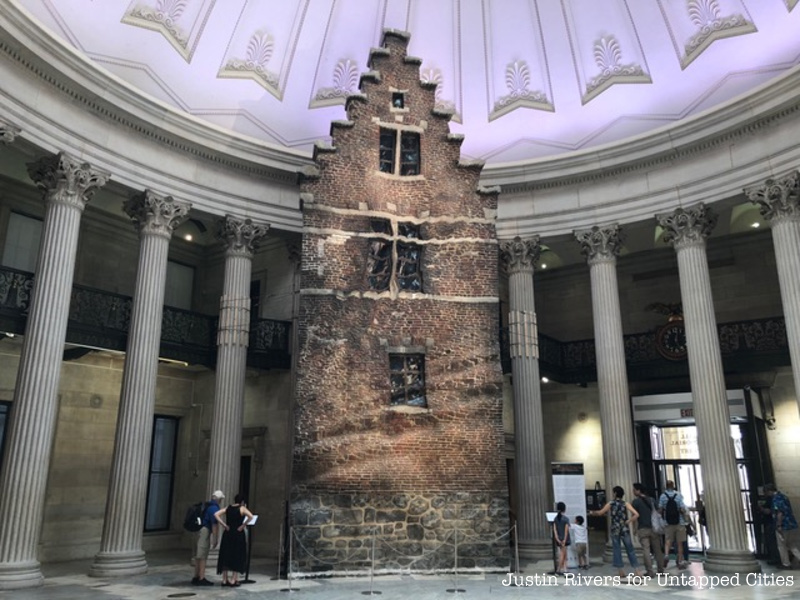8. Federal Hall Was the Location of the Conspiracy of 1741 Trials

In 1741, thirteen fires ravaged New York City, one after the other, leading to a wave of mass hysteria—much like the kind that occurred during the Salem Witch Trials of the century before. 200 people were thrown into jail at the then-City Hall, and thirteen people were burned at stake and seventeen were hanged. Of the 35 that died, 30 were African Americans.
Before the fires, the fear and suspicion floating around New York had been brewing among whites plagued by racism and fears about job security. They feared that the growing slave population in New York, numbering roughly 11,000 at the time, along with the working-class whites, might be planning a mass revolt. When the thirteen fires broke out, so did a wave of mass hysteria and panic that culminated in the executions.
At ten o’clock on April 21, 1741, the Supreme Court of Judicature of the Province of New York convened at Federal Hall. The judge, Justice Phillipse, impelled a grand jury, which included seventeen impartial jurors—although one of the jurors was one of the men whose house had been burned down, leading historians to believe that some bias existed among them.
The first person to testify was sixteen-year-old indentured servant Mary Burton, whose initial reticence soon evaporated and was replaced by a convoluted story about a vast conspiracy involving two slaves who conspired to burn the town, killed any whites who tried to stop them, and aspired to become governor and king.
Two slaves named Quack and Cuffee were the first of the accused to be tried, and although both of their masters testified that the slaves were innocent and had been home that night, they were judged guilty.
On June 4, the trial drew a standing-room-only crowd as John Hughson and his wife Peggy Kerry—whose servant was Mary Burton—were tried on the basis of Burton’s testimony that her masters were conspiring to burn the city down. The Hughsons were Irish, another group feared by the majority of New York’s white inhabitants due to their Catholicism and the influx pouring into the country during this time. Hughson may have been inspired by the city’s Freemason’s club to form his own secret society which eventually plotted to burn the city. On June 12th, the Hughsons were executed. The case’s other purported ringleader, a slave named Caesar, was also hanged.
[post_featured_tour]





